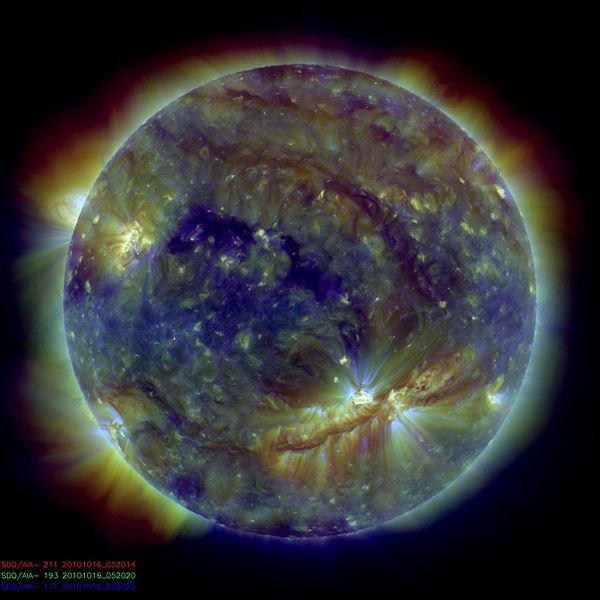Here are the hypotheses that offer an explanation
of some natural phenomena on the basis of
Pressure Gradient Elastic Waves
Energy accumulation in atmospheric vortexes

Vortex flows (e.g. tornados) accumulate much kinetic energy from the Earth’s atmosphere.
Presumably, the source of this energy is the thermal energy of air streams, which are sucked into the central zone of the vortex.
Tornado generates a powerful sound.
Rotation generates a pressure gradient.
In these circumstances
the Pressure Gradient Elastic Waves should arise.
PGEW transfer energy from the center
to the periphery of the vortex.
On the outer boundary of a vortex
the rotation and pressure-gradient are decreased .
Pressure Gradient Elastic Waves dissipate
and the energy of the PGEW is transformed into the kinetic energy of rotating air.
The temperature rise phenomenon inside the solar "atmosphere" with increasing distance from the sun center.

The temperature in the central zone of the sun
is extremely high.
With distance from the central zone, the temperature decreases.
Inside the photosphere (the bottom layer of the Sun atmosphere) the temperature is found to be about
~ 5800°K.
Paradoxically, in the upper layers the temperature increases again.
In the chromosphere (the next layer of the solar atmosphere), the temperature increases with increasing altitude from 4400K to 25000K.
Today’s knowledge allows us to assert
that the solar atmosphere contains:
powerful magnetic fields,
intense streams of solar plasma,
and powerful sound waves.
Possibly occurring Pressure Gradient Elastic Waves transfer heat
to the upper layers of the solar atmosphere.
Solar “sound” generates PGEWs.
Plasma flows interact with the magnetic field.
The Lorentz forces arising in this case
can be directed upward from the solar center.
If the vertical component of these forces
exceeds the force of gravity,
part of the solar atmosphere may rearrange itself
so that the pressure increases with increasing altitude.
Under these conditions, Pressure Gradient Elastic Waves can transfer heat to the upper layers of the solar atmosphere.
Energy of the sound resonator
Today it is easy to amplify sound using an electronic amplifier.
At the same time, it is obvious that to perform this task,
this device increases the power of electricity consumed.

A tuning fork produces a sound
of a certain frequency.
To increase the sound volume, it is installed on a resonator box,
the dimensions of which are selected so that sound resonance occurs.
It is appropriate to ask the question,
what source of energy amplifies the sound in
an acoustic resonator?
An adequate answer to this question was absent until now.
The thermoacoustic effects are well known.
‒ Direct thermoacoustic effect
(generation of sound by heat – described in the 19th century in the works of M. Faraday, J. Rayleigh). For example, if at a certain distance the walls of a tube are heated and cooled, it will begin to generate sound. The frequency of sound depends on this distance, and the sound volume depends on the temperature difference
‒ The inverse thermoacoustic effect
(generation of temperature separation by sound) was discovered in the 1970s. A sound wave in a pipe can create a heat flow and a temperature gradient. The sound plays the role of a Heat Pump, maintaining the temperature difference.


